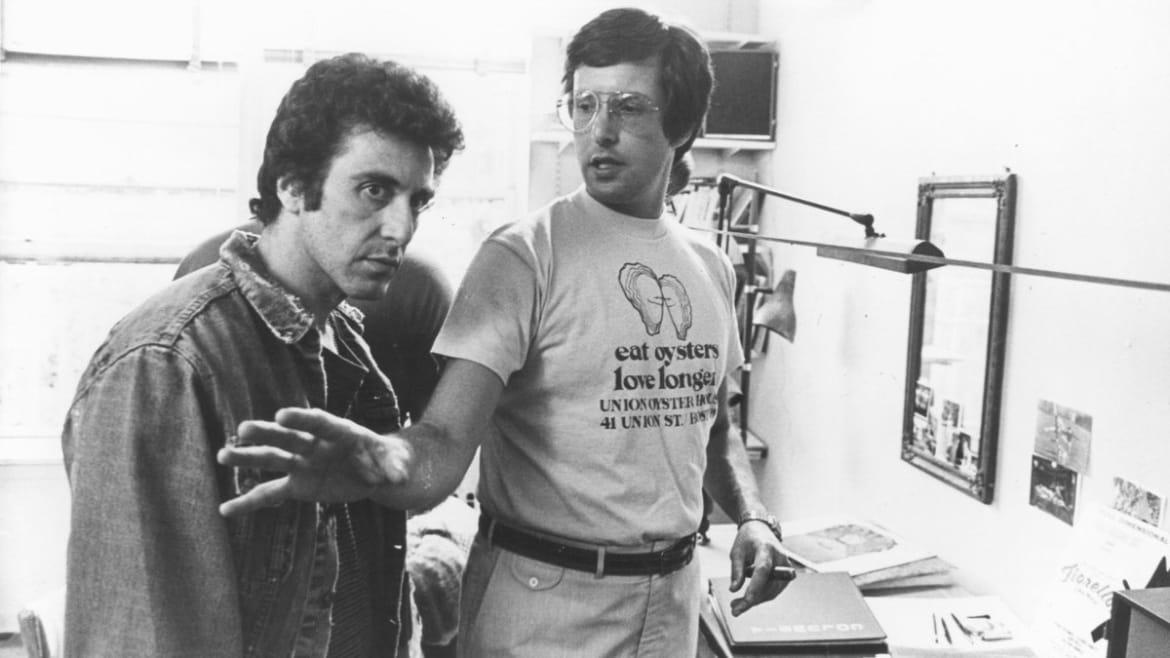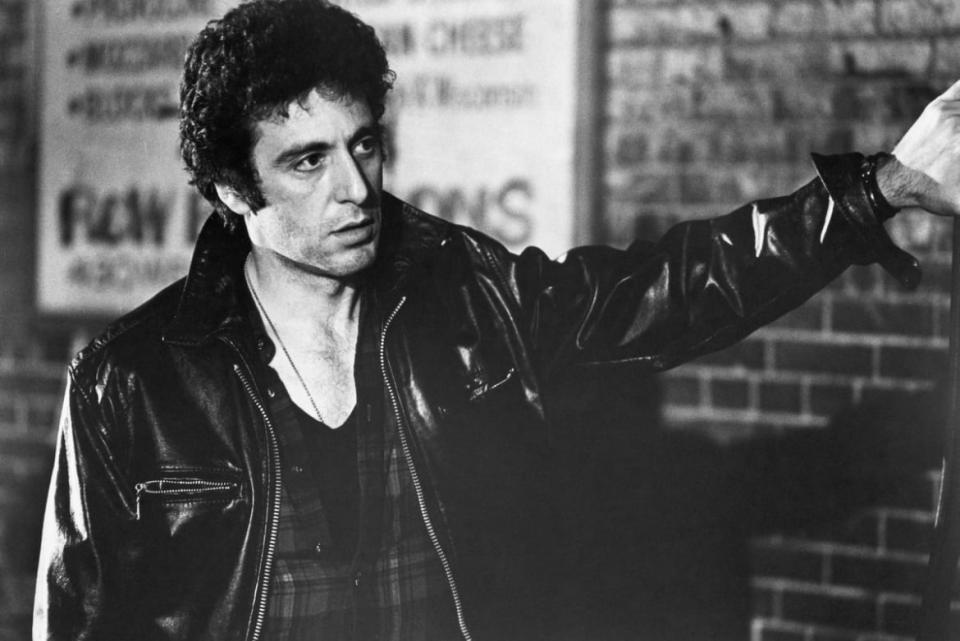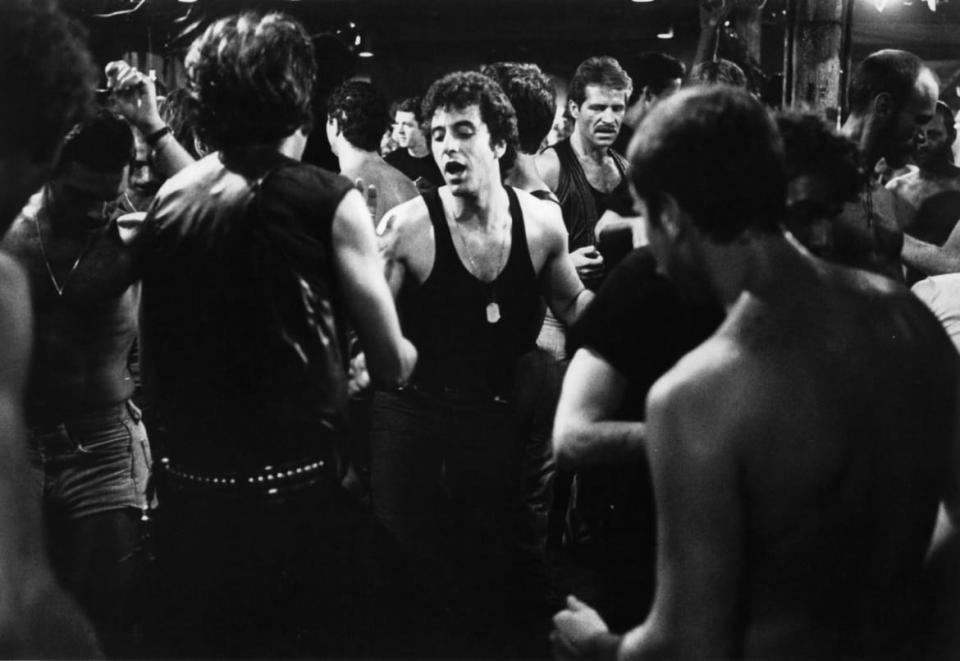William Friedkin’s ‘Cruising’: Al Pacino Doing Poppers at a Gay Club Is More Important Than Ever

(Warning: Spoilers ahead for a movie released 43 years ago!)
There’s lots of talk of things being problematic and controversial these days, but most modern media controversies are child’s play compared to the fury that surrounded William Friedkin’s Cruising. In the wake of Friedkin’s death this week—and as some of his greatest work, like The Exorcist and The French Connection, are remembered—I wanted to pay tribute to his underappreciated portrait of gay culture, violence, and liberation, a film that was decried during its release four decades ago but may be more relevant today than ever.
The 1980 film, starring Al Pacino as Steve Burns, an undercover cop sent to investigate a series of grisly murders targeting gay men. To find the killer, he immerses himself in the gay leather and S&M bars in New York City’s Meatpacking District. The queer community came out in droves to protest the movie, fearful that a film about a serial killer targeting gay men was going to destroy any goodwill the community had fought so hard to build.
As writer Mark Harris explained in a 2007 Entertainment Weekly article, “They protested by the hundreds at the sites of location shoots. They rented apartments next to rooms where Cruising was filming, making so much noise that much of its dialogue had to be rerecorded after production … They stood on rooftops, wielding huge reflectors to spoil the cinematography.” Evidently, hell hath no fury like a homosexual scorned.
Judging by the initial release of Cruising, the concerns of gay men seemed entirely validated. TIME said the film has “something to offend almost everyone,” while Roger Ebert observed that “what could have been a powerful film dissipates its force and leaves us feeling merely confused and annoyed.”
The film earned under $20 million, and largely faded from public consciousness, dwarfed by critically adored Friedkin films like The French Connection, The Exorcist, and Sorcerer. But if any film has ever deserved a second look, it’s Cruising; it’s a masterwork, a remarkable, groundbreaking portrayal of homosexuality, a blazing condemnation of the police, and one of the most erotically charged mainstream films ever made.
The film actually goes out of its way to explain that the world Steve is immersing himself in isn’t the universal gay experience—it is, in fact, a particular subsection of the gay community that the killer is targeting. “It’s a world unto itself,” Captain Edelson (Paul Sorvino) explains to Burns, warning him to prepare himself for what he’s about to see.
Cruising is never better than when Burns is absorbed in underground nightlife. Friedkin revealed in an audio commentary that he hired actual patrons of these bars as extras—“You couldn’t get actors to perform this”—and instructed them to act just as if it’s a regular club night. Friedkin was committed to creating as accurate a setting as possible, even agreeing to the club’s strict dress codes, showing up in nothing but a jockstrap to film—“and I was the ugliest guy in the room,” he said.
‘Exorcist’ Director William Friedkin Tells All in New Memoir
The scenes are flush with nudity, with jockstrap-clad men as far as the eye can see—if there was an award for most bare asses in a film in the 1980s, Cruising would win hands down. Men give and receive oral sex, kiss passionately, and sweat the night away on the dance floor. There’s even (pearl clutchers, look away now) fisting!
There’s an incredible freedom to these club scenes, especially for queer people. These seedy bars offer incredibly sexy moments of queer liberation. You don’t have to be the kind of gay guy who heads to sex clubs jockstrap-clad to find these moments to be a celebration of sex and sexuality. The film clearly establishes that these men have lives outside of these clubs, but these venues provide an opportunity for people to let loose of the homophobia that plagues them every day; here, they can be everything they want to be, and do anything they want to do.
Then there is the most memorable scene in the movie, where Burns finally lets loose, fully immersing himself in the community and dancing the night away. It’s the kind of moment that would end up being memed to death on TikTok, but thankfully the film came out decades before people started taking certain film scenes wildly out of context.

One of the most tantalizing aspects of Cruising is Burns’ own sexuality. He’s married to Nancy (Karen Allen), in a marriage that feels perfectly satisfactory, but seems to lack the fiery passion both of them are looking for. But in Pacino’s considered, sensitive performance, there’s a lingering feeling that Burns knows exactly what he wants, and it’s to be a part of the very world he’s gone undercover in. When we see Burns trawl through the various clubs in the Meatpacking District and cruise through the park, he never betrays any sense of disgust. Instead, there’s a definite curiosity that flashes in his eyes, which begs the question: Is he really just doing his job, or has been awakened to a life he’s secretly always wanted?
Cruising answers that question when Burns starts dancing. This man, so stifled by boundaries of heteronormativity and a career in the homophobic police force, is finally granted a sense of freedom. His moves are erratic but unmistakably joyful. He sniffs poppers off a rag and parties the night away. Brazenly, Friedkin cuts between Pacino dancing, images of the flashing American flag on the club walls, and a man getting fisted—a thrilling celebration of queer America in all its glory, sex and all.
It’s clear his time undercover is changing him—he says that himself to his wife, frustrated by his fading desire for her. “Why don’t you want me anymore?,” Nancy begs of her husband. “I don’t understand what’s happened to you.” “Neither do I,” Steve answers, but he knows exactly what’s happening, even if he’s far too terrified to admit it.
‘Passages’: Why Ira Sachs Made the Horniest Film of the Year
We have every reason to believe Steve has dabbled with men before. When he’s first asked by his superior whether he’s received oral sex from a man, he responds “No. Uh, well…” before he’s cut off. There’s a flash of fear in his eyes, as if he were to tell the truth, he’d lose his job.
The film has also received swathes of criticism for its shocking, open ending. The killer has finally been caught, though he refuses to confess to the murders. But a last second twist suggests that the killer may have been Pacino’s character all along. Those who despised the film likely felt this was the film saying that Burns, so deeply disturbed by his experiences in gay sex clubs, was driven mad and turned into a killer.
But the reality is likely more sinister, and more a reflection of homophobic society and internalized homophobia. I don’t believe Burns killed all those men, but I do think he killed Ted (Don Scardino), the one gay man he had what seemed like a genuine friendship with.
The film is also a scathing indictment of the police as a whole. One officer says, “One day, the city is gonna explode,” while observing a group of gay men, is later soliciting a blowjob from a prostitute and seen cruising in the park, very much not undercover. Their interest in solving the case only seems to exist because of external pressures, not because of any actual desire to help these men being systematically targeted.

When they do catch the alleged killer, Edelson is quick to offer the man a mere eight years in prison if he confesses to the crime, seconds after threatening him with 20-to-life. It’s crystal clear that the police are more than happy to sweep this under the rug to stop the media from reporting about it. That opens up an even more sinister interpretation of the film’s ending: More people are destined to die, and the police will do nothing about it—and if Burns really is the killer, they may even be encouraging these deaths.
Friedkin was a remarkable filmmaker, whose films felt so specific to a particular time, yet had an undeniable timeless quality. That’s certainly true of Cruising, based on a real string of murders targeting gay men in the S&M community. But its exploration of homophobia and sexuality endure. How can something like Cruising be considered homophobic by today’s standards when it’s so undeniably sensual and erotic?
Keep obsessing! Sign up for the Daily Beast’s Obsessed newsletter and follow us on Facebook, Twitter, Instagram and TikTok.
Get the Daily Beast's biggest scoops and scandals delivered right to your inbox. Sign up now.
Stay informed and gain unlimited access to the Daily Beast's unmatched reporting. Subscribe now.

 Yahoo News
Yahoo News 
